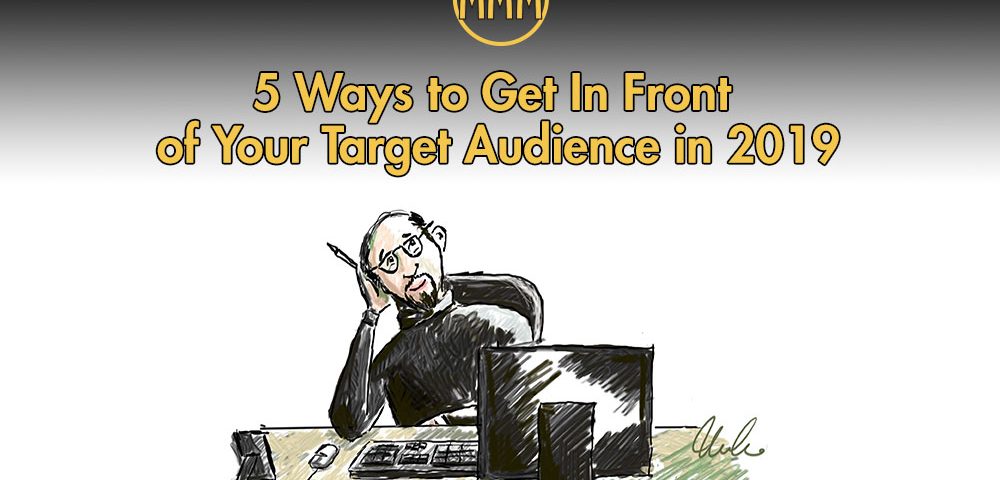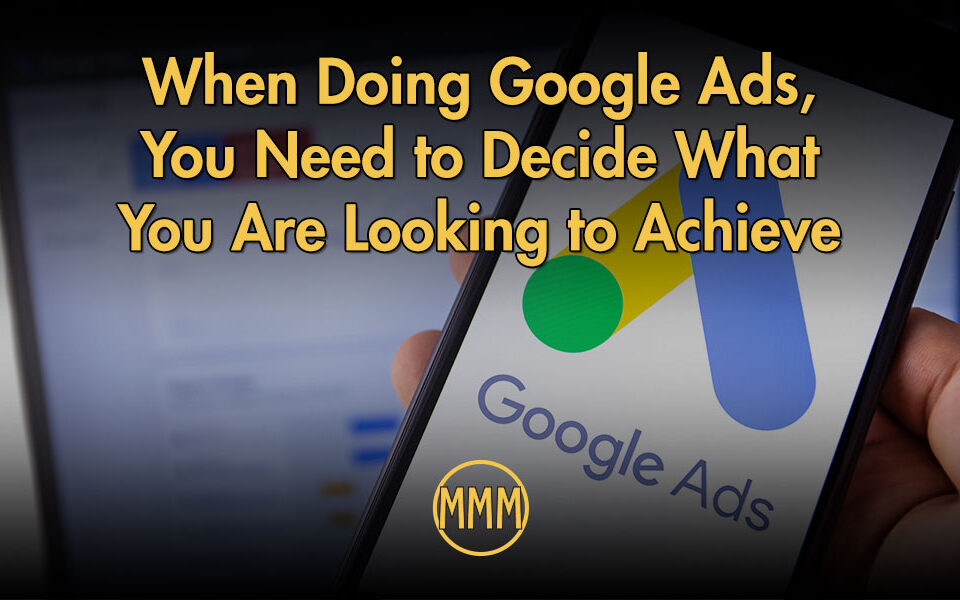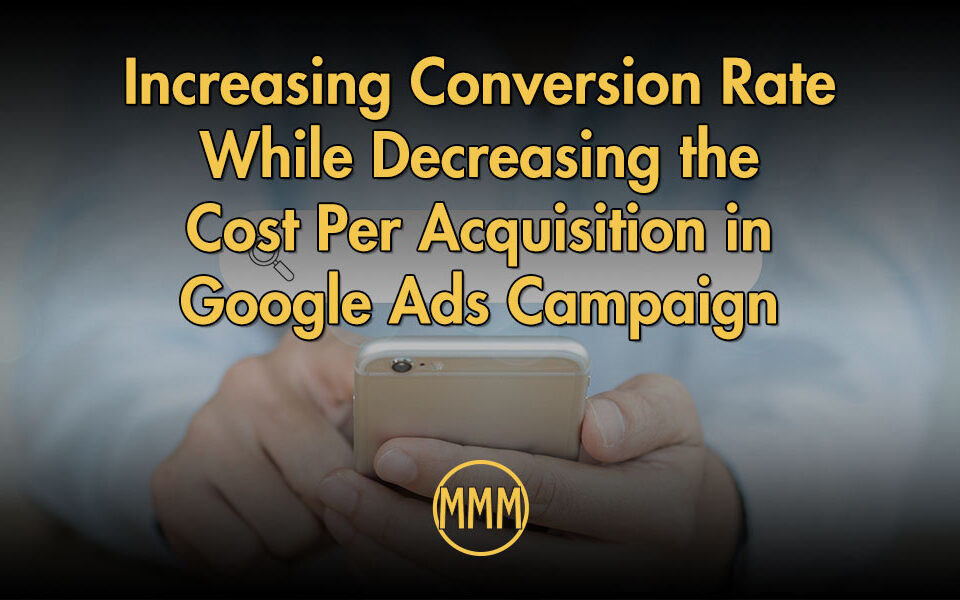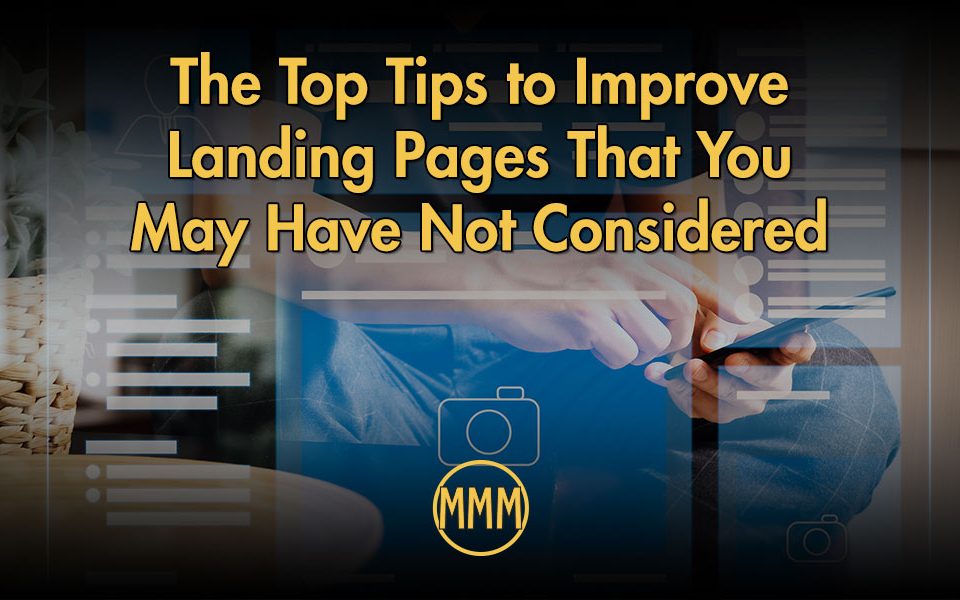
3 Steps to Crafting a Message that Separates You From Your Competition
October 14, 2019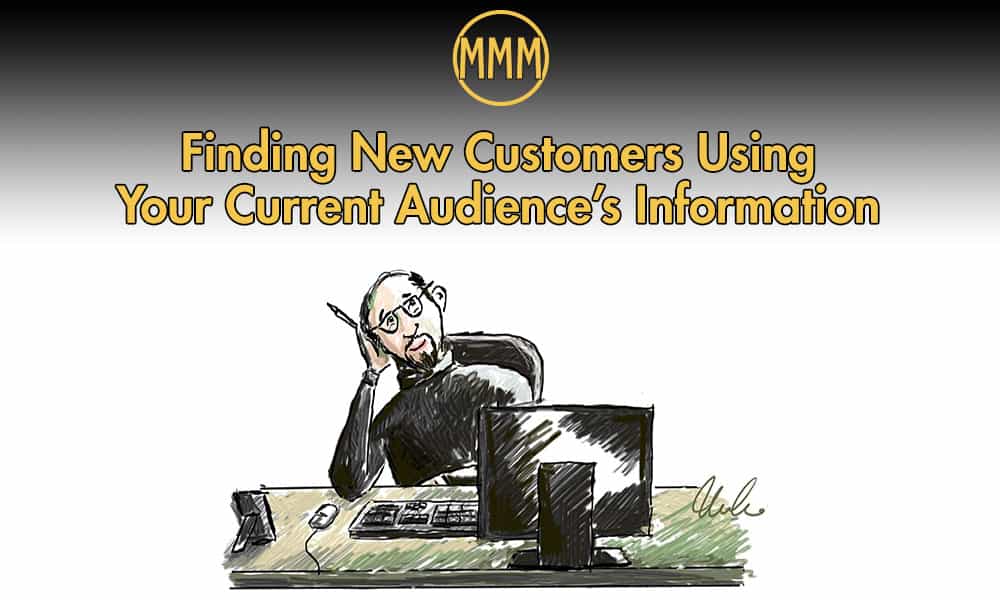
Finding New Customers Using Your Current Audience Information
November 4, 2019Summary: Don’t sit back and wait for your target audience to find you. Get in front of your target audience. These are the 5 most popular ways to do so.
You’ve done your research and crafted a message that will truly resonate with your target audience now. The next step is delivering that message to your audience. There are plenty of options to choose from to get in front of your target audience. Some of these include search engine optimization, Google AdWords, social media ads, and even chatbots, and this is by no means an exhaustive list. Choosing the one that works best for you would depend on who your target market is, what platforms they are comfortable with, and which they regularly use.
The other thing to consider is that you don’t have to choose one. You can use any combination of platforms to get in front of your target audience. The key is choosing the right ones. Below is a list of the major with their benefits and drawbacks. Let’s get started.
Search Engine Optimization (SEO): Being Found When They Search
Search Engine Optimization (SEO) is the process of optimizing your website with content that will make it relevant to appear in the results when someone searches for a particular product or service. SEO has advanced to the point where Google will try to predict what you are looking for based on the information they have about you. Before you get all freaked out, most of this data is anonymous.
The benefits of SEO are that appearing in the search results doesn’t cost any money. It’s basically “free,” and by free, I mean you don’t have to pay to be there. Google places you in the results. However, you may have to pay for someone or some company to update your site based on which search term results you wish to appear. The issue with that is that there are plenty of others that do the same thing as you. There are around ten spots on the first page, and competition can get fierce trying to rank in those ten spots.
There are plenty of theories on how Google places websites on their search results page. If asked, Google will not tell you exactly how they do it, but they do give you guidelines to follow. SEO companies and experts have experimented with different techniques to see if they can gain some insights, but, at least in my opinion, it’s just a guessing game. There are some standard practices that you can follow on your own, particularly in the overall structure of the site. I can tell you for sure if you are not getting any traffic to your website, it would be hard to appear at the top of the search pages. We’ll get into traffic driving platforms later.
Google AdWords: Get in Their Face When They Search
Google AdWords tends to be the first choice for many to get in front of their audience. At the very least, it’s the most widely known. The great thing about Google AdWords is that it appears at the top of the search engine results page before everything else. The issue with Google AdWords is that it could be expensive, mainly if you compete for popular search terms.
The way Google AdWords works is an auction for the top spot on the page. You bid against others, the winner takes the top spot, and the rest of the field is placed based on their bid amounts. You set a maximum bid amount and a daily budget. As competition increases, the price per bid to be at the top and steadily increase.
Ads in AdWords has a specific structure and character count. Over the years, they have added additional features and extensions that will supplement the ad. Some are free, and others have a fee. Some of these include a clickable phone number featuring products, services, and links to other pages on your site. They also allow you to create dynamic ads based on the search terms of the page. They give you plenty of options to get in front of your audience.
Before an ad starts appearing, it will need to be approved by Google. They have guidelines on what you can say or promise in your ads. They also have an appeal process that you can use in case they misconstrue your message. In many cases, the appeal process will get an ad approved, and in some cases, you may have to reword the ad. Overall the ad placement is pretty straightforward.
To place an ad, you choose the search terms in which your ad will appear, and Google will recommend how much you should bid. You don’t have to bid that much. In some cases, you won’t need that much for the first position. You only get charged once someone clicks on the ad. Depending on how often a term appears in a search determines how expensive the bid needs to be. One or two-word searches tend to be higher in price than longer phrases. There is a boatload of strategies on how to maximize your return on your investment. I just wanted to give you an overview of its pluses and minuses and how it works for our purposes.
SEO and AdWords are great tools to get in front of your audience if your target audience is searching for you or your product. What if they have no idea your product exists? You have to get in front of your audience in other ways. Enter social media ads.
Social Media Ads: Get in Front of Your Audience When They Aren’t Looking for You.
Social media ads are a part of the social media feeds of their users. How do they get there? You place the ad based on the demographics of your target audience. For example, if your target is men aged 45 to 60 that live in the state of New Jersey who make an income of over $100,000 and are interested in sports TV, you can place ads that only those individuals will see in their feeds. Pretty cool, right?
You can also place ads based on past visitors to your websites or your customers. You can upload the list to the social media platform, and they will find others that are similar or what they call “lookalike audiences” and display your ad to those individuals.
The ads are a bit more flexible than Google AdWords because they are in the user’s feed. There isn’t as much of a need to squeeze them into a small space. They have character restrictions and content restrictions, so, like AdWords, the ads will need to be approved before they appear in people’s feeds. For any advertisements that end up being rejected, you can file an appeal.
The big downside of social media ads is that people aren’t looking for your product or service, so the clicks and conversion rates are lower. You may also run into people seeing your ad and just checking out what you’re all about, which is why you have low conversion rates. Like AdWords, you can choose to be billed by the click. However, you will probably need several impressions per person to get them to take action.
Like any ad platform on the internet, there are plenty of techniques to get in front of your audience. One thing to consider is that all these platforms are continually updating and getting smarter, which is a benefit to the consumer. The issue with that is you need to keep up with improvements and new techniques regularly.
Chatbots: Getting in Front of Your Audience When They Have Questions
We live in a world today where we expect an immediate response to questions, requests, texts, emails, phone calls, you name it. More and more, websites are using chatbots to help visitors to their website with any questions. Chatbots have the advantage over contact forms because they are immediate response mechanisms. It encourages the visitor to stay on the page a little bit longer; it answers some of the questions they may have and ultimately convince them to make a purchase.
Initially, chatbots were the work of programmers. Now there are various chatbot applications out there where you can create a chatbot by basically dragging and dropping questions and answers in a logical order. One in particular I like is ManyChat, which integrates with Facebook Messenger. I love this application because it uses an automated chatbot, but it can push your Facebook Messenger conversation for real-time interaction with a website visitor. Another one I would recommend is the chatbot that HubSpot hosts. I like this one because it will integrate with their CRM (customer retention management) so you could remarket to these visitors down the road. So how do they work, and do I need to learn to program to build one?
Technically, building a chatbot is relatively easy. Most of the interfaces contain modules that you can drag into place in the order you want them to appear. The interface tells you what text to enter and any options you want with that module. That’s the easy part, believe it or not. The hard part is coming up with the flow of the questions.
For a chatbot to work, there needs to be a sequence of questions and answers. The hard part is you have to anticipate the problems and have answers ready. In the end, you will have a flowchart of questions that lead to solutions that could lead to other issues to other answers. Setting up and adequately structuring a chatbot can be an article in and of itself. I wanted to mention that they aren’t as technically overwhelming as you may think.
Bringing it all together
The key takeaway is that if your target audience is very diverse, you don’t want to limit yourself to one or two ways to engage with them. Also, this is not, as I said at the beginning, an exhaustive list of options. It’s more of a “start with the basics” approach to reaching your target audience. Within each of these platforms is a myriad of options you can employ to target your audience more effectively.
Also, you don’t want to use them all to use them. Devise a strategy on how you can use each effectively to deliver your message. There is nothing worse than a half-assed implementation of a marketing platform. It’s a great way to waste money and time; however, I am not discouraging you from experimenting.
An excellent digital marketing strategy delivers the right message to the right people at the right time for every business that could mean something different. Decide what works best for you. I encourage you not to sit back and wait for your audience to come to you. I encourage you to get out there and start marketing.

